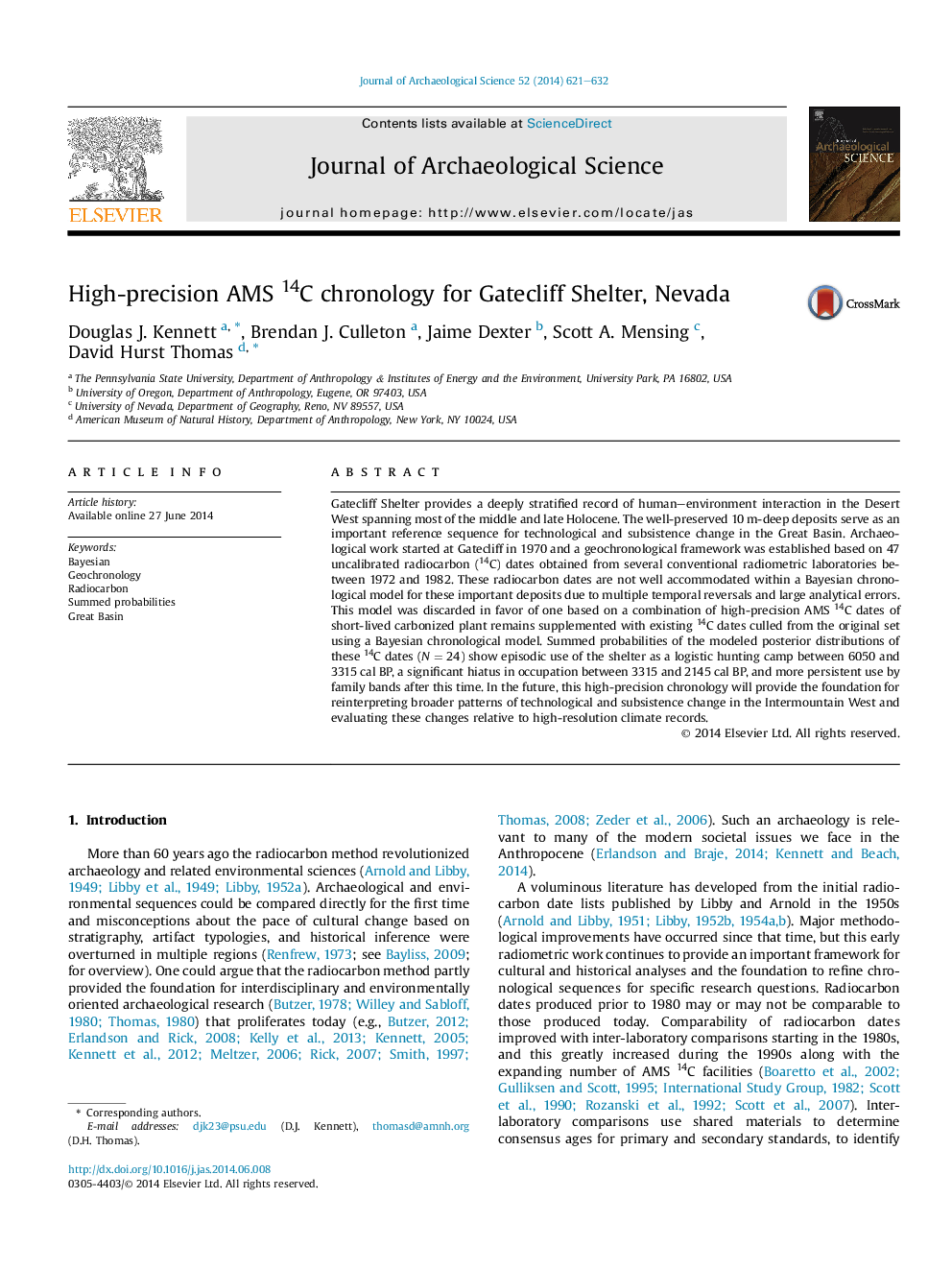| Article ID | Journal | Published Year | Pages | File Type |
|---|---|---|---|---|
| 7442836 | Journal of Archaeological Science | 2014 | 12 Pages |
Abstract
Gatecliff Shelter provides a deeply stratified record of human-environment interaction in the Desert West spanning most of the middle and late Holocene. The well-preserved 10 m-deep deposits serve as an important reference sequence for technological and subsistence change in the Great Basin. Archaeological work started at Gatecliff in 1970 and a geochronological framework was established based on 47 uncalibrated radiocarbon (14C) dates obtained from several conventional radiometric laboratories between 1972 and 1982. These radiocarbon dates are not well accommodated within a Bayesian chronological model for these important deposits due to multiple temporal reversals and large analytical errors. This model was discarded in favor of one based on a combination of high-precision AMS 14C dates of short-lived carbonized plant remains supplemented with existing 14C dates culled from the original set using a Bayesian chronological model. Summed probabilities of the modeled posterior distributions of these 14C dates (N = 24) show episodic use of the shelter as a logistic hunting camp between 6050 and 3315 cal BP, a significant hiatus in occupation between 3315 and 2145 cal BP, and more persistent use by family bands after this time. In the future, this high-precision chronology will provide the foundation for reinterpreting broader patterns of technological and subsistence change in the Intermountain West and evaluating these changes relative to high-resolution climate records.
Related Topics
Physical Sciences and Engineering
Materials Science
Materials Science (General)
Authors
Douglas J. Kennett, Brendan J. Culleton, Jaime Dexter, Scott A. Mensing, David Hurst Thomas,
